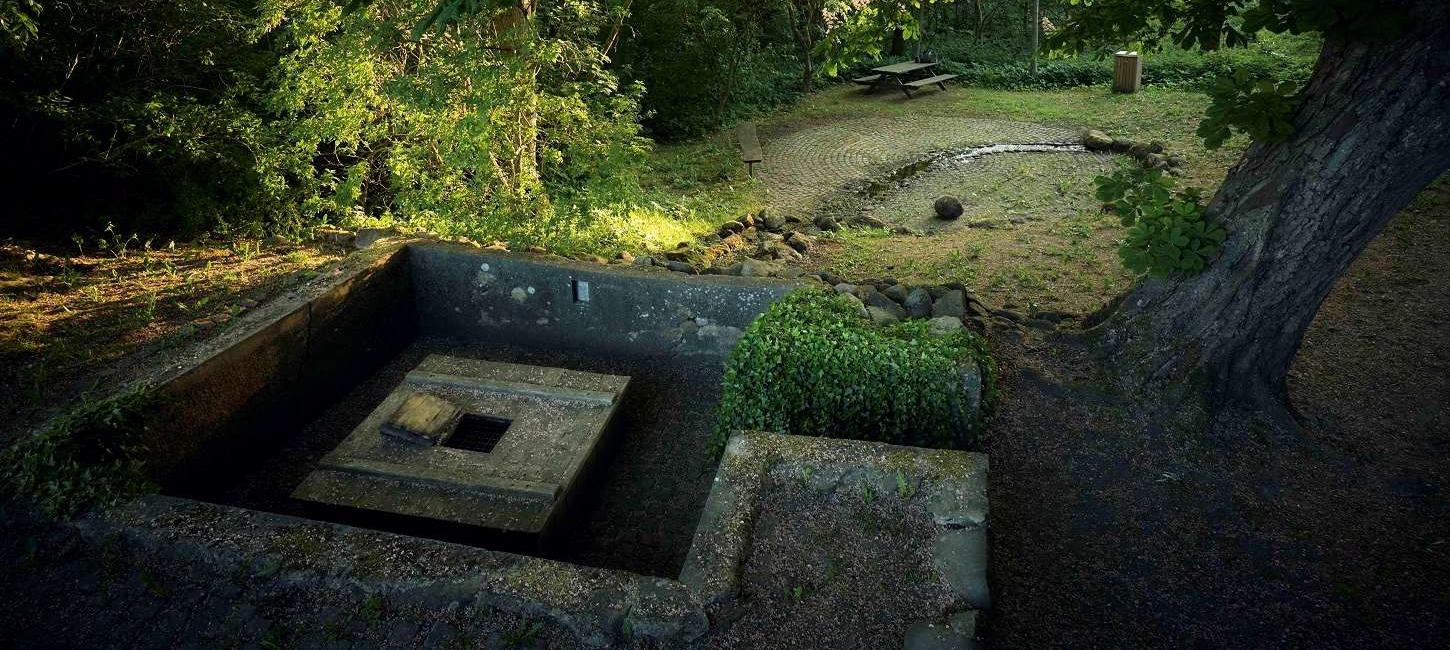
Following the footsteps of H.C. Andersen at Regisse Kilde
From a young age, H.C. Andersen was familiar with this holy spring, accompanying his mother to religious gatherings during the annual Midsummer Eve Market held there.
As a child, H.C. Andersen visited Regisse Kilde with his mother, who participated in the annual religious gatherings at the St. Hans Market. Andersen grew up with both a strong faith and a fascination with superstition, drawn to both Jesus and the Norse gods. This background later inspired him to the novel Only a Fiddler, published in 1837.
"Even today, the superstition persists among the common people that certain springs in Denmark, as in the time of Catholicism, are attributed with great holiness. The Funen islanders consider St. Regisse Kilde, near the village of Frørup, to have the greatest power; and as a so-called spring market is associated with it, the crowd flocks here; from several miles around, even from beyond Odense and Svendborg, the sick come here the night before St. Hans Eve; they drink from the water, bathe in it and spend the night in the open air. For three years in a row the sick person must come there, if he does not become agile and healthy in that time, says the common man, then he will never be." [Part One, Chapter VII]
Later in the poet's third novel, there is a detailed description of Regisse Kilde and the spring market held in the adjacent village of Frørup:
"About two miles from Nyborg, between the villages of Ørebæk and Frørup, but closest to the latter, lies St. Regisse Kilde, which, according to popular legend, takes its name from a very devout lady who was badly persecuted by evil men, indeed they even took the lives of her children, but in the same place where this happened, a beautiful spring immediately sprang forth. When Lady Regisse was long dead, many devout pilgrims came from afar to drink of the spring's water, and in holy remembrance they built a chapel near the spring and hung her image there. Every year on St. Boel's Mass Day, preaching was held here, but when Luther's teachings were introduced into the country, this chapel was allowed to fall into ruin; the spring, on the other hand, still trickles and is visited year after year at St. Hans's Day, and a market is held then. In order not to be seen by a large crowd, it is said that the custom has gradually established itself that the sick spend the night before St. Hans Eve at the spring. At sunset they are washed in the water, and a bed is prepared for the night; in the morning they break up, the weakest are taken home, while those whose illness allows it stay and take part in the market's festivities. In the village of Frørup, where the spring market stands, people were busy setting up stalls and tents. On all the roads one saw riders and walkers with their sick; some walked across the meadow, where, between hazels and alders, the spring flows; it is shaded by some rather tall trees, on which the common people still today, according to Catholic custom, hang their offering, which consists of some candles. The green hedges around must serve as a screen for the sick who are undressed and washed; their old clothes remain hanging on the branches, where the poor then beg them for their own use." [Part One, Chapter VIII]
We know for certain that H.C. Andersen visited Regisse Kilde several times after the creation of the novel Only a Fiddler. The excursions there were made in connection with his summer stays at the nearby Glorup Manor. In his diary on June 17, 1848, the poet writes, for example: "Saturday 17. Wrote diligently on the novel [The Two Baronesses, ed.] every day, drove to the miller in Frøerup, walked with the Countess to Frøerup Kilde, heard the nightingale, alder trees to the left. Beautiful view from the spring, drove home via the other mill".
The poet also experienced the well-attended and lively spring market on St. Hans Day. In his diary on June 24, 1850, we find this vivid description of both the market and an experience of the sick at the spring that was unsettling for H.C. Andersen:
"Sunday [?: Monday] 24. After dinner drove to FrøerupKilde Market, it is held on the main road itself; shop by shop, filled with people, we could hardly get through, our horses were about to knock over one or another shop. Coffee was being made, the smoke from the peat and the smell of bad tobacco suffocated the air. - There were tables with fried eels in all the dust. - We went to the spring, in the trees around it hung meager, small candles, and a rag of a blue silk scarf, the water was handed out in a large brewery's tub. Women washed themselves three times in the water: 'It is good for many things!' said one. There was a terrible vagabond by the spring, I had a feeling that he might know who I was, and could say something unpleasant to me; as if I were a pariah come into a higher caste. - I felt nervous in the crowd and we went over the fence, potato field, which had been hoed, over a rotten well into the mill, ..."
The unpleasant experience was perhaps part of the explanation why, exactly one year later, H.C. Andersen did not want to enjoy a reunion with the market: [Diary, June 24, 1851] "- Slept very little tonight. Today spring market in Frøerup, I didn't bother to go there; it is always the same, crazy crowds and shops on the narrow country road."
